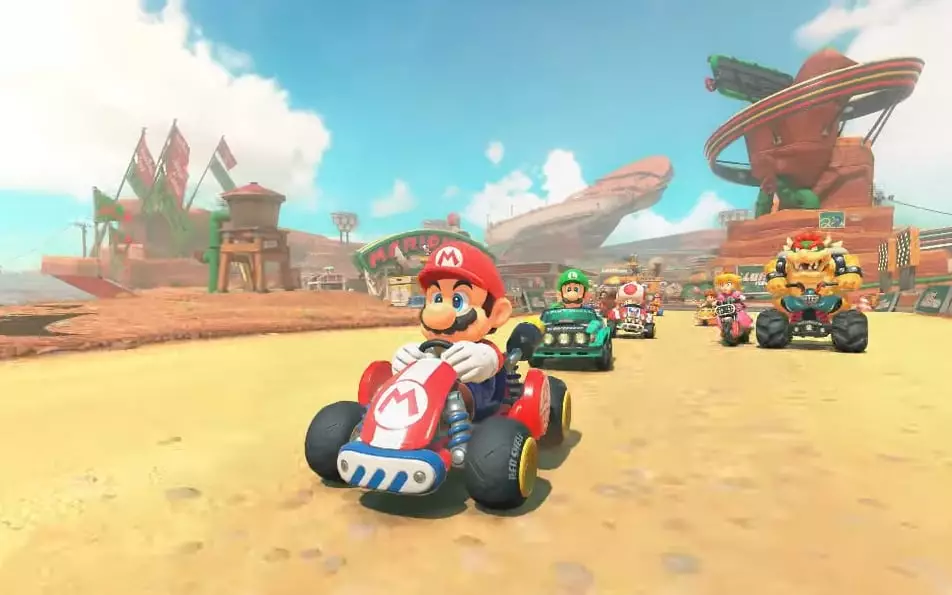As speculation mounts around the upcoming Switch 2, the focus is on whether Mario Kart 9 will serve as the console’s flagship title. Mario Kart is not just a series; it embodies retro nostalgia and exhilarating multiplayer experiences. With the massive success that Mario Kart 8 Deluxe has enjoyed over the years, currently standing at over 67 million copies sold, the question emerges: will this new installment be compelling enough to persuade existing Switch owners to invest again in a new system?
Nintendo has an almost unbelievable reputation for engaging its audience with innovative experiences. But the truth is that sequels inherently come with high stakes. Kit and Krysta, former Nintendo employees turned content creators, have raised enlightening points about the hurdles that Mario Kart 9 faces. How do you outdo something rightfully accepted as a cultural phenomenon? Any sequel set against the benchmark of its predecessor often seems like an uphill battle. Despite the fond memories and fun mechanics many associate with the franchise, the glaring question remains—does nostalgia alone suffice when it’s time for potential buyers to shell out cash for new hardware?
The Content Conundrum: Is More Enough?
The ongoing content updates for Mario Kart 8 Deluxe have kept the community vibrant and engaged. The game provides endless fun that has allowed it to flourish even today. Thus, the existence of a solid game isn’t just about how fun it is—it’s about sustaining the community’s excitement. For a title that has retained its relevance through continuous updates, presenting a new game looks like a mixed blessing. Krysta noted that for the average gamer—especially casual fans—investing in Mario Kart 9 requires buying a whole new console, with some families hesitant to spend so much when they might find Mario Kart 8 Deluxe entirely satisfactory.
Costs greatly affect decisions in real-world consumer behavior. Especially when the family dynamic involves various stakeholders with different levels of engagement, the impulse to upgrade from a console that’s delivered endlessly joyful moments compounds the challenge. Will Mario Kart 9 manage to present a tantalizing enough upgrade for players to feel that spending the price of entry for the Switch 2 is justified? If many already have access to a fantastic Mario Kart experience on their current Switches, how much will the prospect of glitched-out graphics or exciting new characters matter to those contemplating making that leap?
Nintendo’s Historic Challenges and Stakeholder Expectations
While Nintendo has in the past stumbled in its transitions—especially post-Wii U—this time they’re betting more heavily on the extensive lineage of the Mario Kart franchise. The commentary from Kit and Krysta brings forth the dichotomy of legacy versus novelty. Previously, they reveal, Nintendo was surprised by the enormous success of Mario Kart 8. They treated the Switch port as an afterthought yet it morphed into a major player that helped buoy the system. Now, the stakes are exponentially higher.
Nintendo’s task goes beyond crafting a fantastic game; they must handily convince audiences that a purchase of the new console is required. What can possibly be radical enough in the new Mario Kart experience that players feel they have missed out, should they forgo immediate purchase? Engaging graphics? Innovative game mechanics? Or perhaps entirely new gameplay modes? As enjoyable as previous offerings were, adaptation to evolving gamer expectations has never been more critical.
What Lies Ahead: The Ultimate Test of Engagement
As we stand on the verge of the release of the Switch 2, the spotlight is on Nintendo to deliver a system that not only thrills but also solidifies its long-lasting relationship with fans through dynamic new content. Mario Kart 9 must not only be a game; it must encapsulate a collective experience that appeals to both nostalgic veterans and new players alike.
Ultimately, the viability of Mario Kart 9 as a system-seller remains an enthralling question that ignites spirited debate among fans and industry aficionados alike. It has the potential to be a celebration of everything beloved about Nintendo while seeking to fracture the comfort of familiarity for something exhilarating. The path forward may be steep, but if Nintendo conjures a magical blend of innovation and nostalgia, it may just secure its legacy for another generation.

